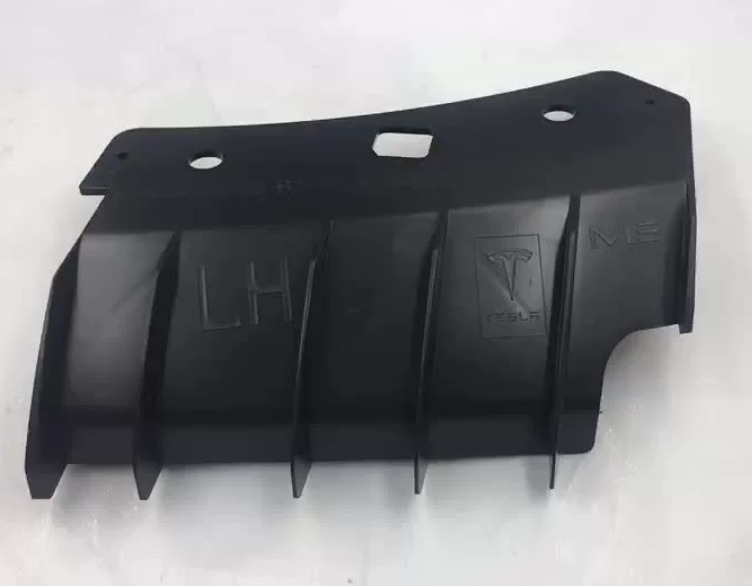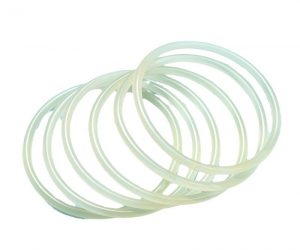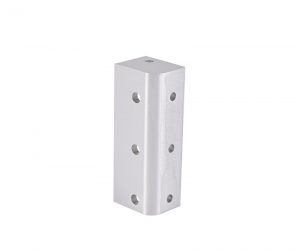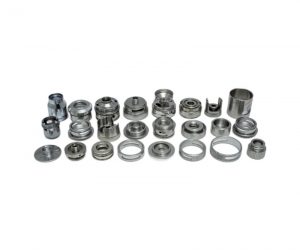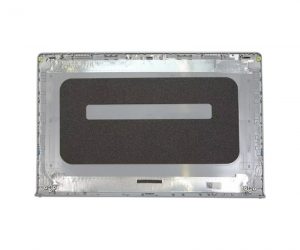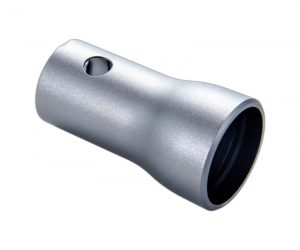Connector injection molding technology is a critical manufacturing process used in various industries, providing essential solutions for creating high-quality, precise connectors. Understanding its applications, advantages, and potential drawbacks is vital for assessing its suitability in connector production.
Applications of Connector Injection Molding
Injection molding in connector manufacturing is highly versatile, enabling the production of a wide range of connector types for different applications. These connectors are essential for electrical, fluid, fiber optic, and hybrid systems across many industries, including telecommunications, automotive, consumer electronics, and industrial machinery. The ability to produce connectors with intricate designs, varying sizes, and specific functionalities makes injection molding an ideal choice.
Advantages of Connector Injection Molding
- High Precision and Quality: The injection molding process guarantees high dimensional accuracy and excellent surface quality. As molten plastic is injected into molds under high pressure, it forms precise connector components with consistent tolerances, reducing the need for secondary operations or repairs.
- Customization and Flexibility: Injection molding offers remarkable flexibility in producing connectors with different shapes, sizes, and configurations. Manufacturers can adjust mold designs and parameters to meet specific customer needs or product requirements, facilitating rapid prototyping and customization.
- High Efficiency and Cost-Effectiveness: Once the mold is designed, injection molding can produce large volumes of connectors with minimal material waste. Compared to traditional methods like metal stamping or machining, the process is faster and less labor-intensive, reducing production costs and improving overall efficiency.
- Mass Production Capability: Injection molding excels in mass production, allowing manufacturers to produce thousands or even millions of identical connectors. This high-volume production capability is particularly advantageous for industries where connectors are integral to the design of large-scale electronic or mechanical systems.
Disadvantages of Connector Injection Molding
- Initial Investment Costs: The initial setup for injection molding, including mold design, tooling, and specialized equipment, can be expensive. This upfront cost can be a barrier for some manufacturers, especially for low-volume production runs.
- Complexity of Process Control: The injection molding process involves multiple variables, such as temperature, pressure, and injection speed, which must be precisely controlled to avoid defects. Variations in any of these parameters can lead to issues like warping, sink marks, or inconsistent product quality, requiring skilled operators and frequent monitoring.
- Mold Maintenance and Modifications: Molds, particularly for complex connectors, require regular maintenance to ensure their longevity and performance. Any changes in design or modification of connector specifications may require costly adjustments to molds.
Types of Connectors for Injection Molding
- Electrical Connectors: These are commonly produced using injection molding and are used in applications that require the connection of electrical cables or components. Electrical connectors vary widely in design and size, from simple plugs and sockets to complex multi-pin connectors used in industrial, automotive, and telecommunications equipment.
- Fluid Connectors: Fluid connectors, designed to transport fluids without leakage or contamination, are another type produced through injection molding. These include hose fittings, pipe connectors, and other components used in fluid management systems in industries such as automotive, aerospace, and manufacturing.
- Fiber Optic Connectors: As telecommunication and data transfer technologies advance, fiber optic connectors have become critical. These connectors require precise manufacturing for reliable signal transmission, and injection molding is ideal for producing the small, complex parts required for this application.
- Hybrid Connectors: Hybrid connectors combine multiple functionalities within a single unit. For example, a hybrid connector might integrate electrical connections with fluid flow control capabilities. These are widely used in industrial machinery and high-tech applications that require both electrical and mechanical connections in a compact design.
Materials Used in Connector Injection Molding
- Polymers, Plastics, and Resins: Common materials used for connector injection molding include polypropylene (PP), polycarbonate (PC), and acrylonitrile-butadiene-styrene (ABS). These materials are chosen for their mechanical properties, including strength, flexibility, and resistance to impact. Polyvinyl chloride (PVC) is often used for insulation, while polyamide (PA) offers good balance between electrical conductivity and durability.
- Advanced Materials: Liquid silicone rubber (LSR) is an emerging material for connector molding, particularly for applications that require resistance to heat, aging, and stress relaxation. LSR also offers superior performance in biocompatible or food-grade applications.
- Additives and Fillers: Manufacturers often incorporate additives such as UV stabilizers or flame retardants to enhance the material’s performance in harsh environments. Glass fiber-reinforced resins are also used to increase the mechanical strength of connectors, especially in demanding industries like aerospace or automotive.
Connector injection molding technology provides a highly versatile and efficient method for producing high-quality connectors across various industries. While it offers numerous advantages such as high precision, customization, and cost-effectiveness, it also presents challenges like high initial costs and the need for strict process control. Manufacturers must weigh the benefits and limitations of this technology to determine its suitability for their specific connector production needs. The continuous advancements in materials, equipment, and automation will likely further enhance the capabilities and efficiency of injection molding in connector manufacturing.
Components of Connector Injection Molding
The connector injection molding process involves a combination of specialized equipment and design considerations that ensure high-quality, precise production of connectors. Here are the essential components:
1. Injection Molding Machine
The injection molding machine is the core equipment in the connector manufacturing process. Its primary function is to melt plastic pellets and inject them into molds under high pressure to form the desired connector shapes. The machines come in various sizes and configurations depending on the requirements of the specific project. Key features of these machines include:
- Clamping force: Determines how tightly the mold is held together during injection.
- Injection unit: Responsible for melting and injecting the material into the mold.
- Machine controls: Regulate the temperature, pressure, and speed during the injection process.
There are different types of injection molding machines, including hydraulic, electric, and hybrid machines, each offering unique advantages in terms of cost, efficiency, and performance.
2. Molds and Tooling
Molds are integral to the connector injection molding process, as they define the final shape, size, and detail of the connectors. Molds are typically made from steel or aluminum alloys, chosen for their high thermal conductivity, which helps minimize cooling times between cycles.
- Mold halves: Most molds consist of two halves that close together during production, creating a cavity where molten plastic flows into to form the connector.
- Tooling: Tooling involves the design, construction, and testing of the molds, ensuring they can produce connectors with precision and meet tight tolerances. The tooling must also be durable enough to withstand high-volume production without degrading.
3. Connector Injection Molding Process
The connector injection molding process begins with heating resin pellets until they melt, followed by injecting the molten material into the mold cavity at high pressure. The material cools rapidly and solidifies into the desired connector shape. Key stages of the process include:
- Injection: Plastic is injected into the mold under high pressure.
- Cooling: The mold cools, solidifying the plastic into its final form.
- Ejection: The cooled connector is ejected from the mold.
This process allows manufacturers to produce connectors with complex geometries at high speeds while minimizing material waste.
4. Design for Connector Injection Molding
Proper design is essential for a successful injection molding process. Design guidelines for moldability include:
- Avoiding sharp corners and thin walls: These features can cause flow and cooling issues.
- Including draft angles: These allow for easier removal of the connector from the mold without damaging the part.
- Tolerance design: Ensuring that connectors fit together correctly and function as intended, with specific attention to dimensional accuracy and surface finish.
Effective mold and tooling design is also critical, focusing on factors such as gate location, runner system layout, and cavity pressure control, all of which impact the quality and efficiency of production.
5. Quality Control and Assurance
Quality control (QC) is crucial to ensuring that the connectors meet the required standards throughout the injection molding process. Key elements include:
- Material inspection: Checking for impurities or defects in raw materials before production begins.
- Simulation and defect detection: During mold design and fabrication, simulations help detect potential issues like air traps or sink marks, allowing adjustments before full-scale production.
- Continuous monitoring: QC systems should be implemented throughout production to ensure consistency and identify issues early.
Quality assurance (QA) certifications, such as ISO 9001:2015, provide proof that a manufacturer adheres to high standards in quality management systems, ensuring reliable and consistent production of connectors.
6. Equipment and Machinery Used in Connector Injection Molding
- Injection Molding Machine Types: As mentioned, machines come in hydraulic, electric, and hybrid forms. The choice of machine affects factors like energy consumption, maintenance needs, and precision.
- Auxiliary Equipment:
- Material handling systems: Feed resin into the injection machine hopper.
- Temperature controllers: Ensure the resin is melted and injected at the optimal temperature.
- Water chillers: Maintain appropriate cooling for molds.
- Dehumidifiers: Keep the resin dry to prevent moisture contamination.
- Conveyors and robots: Automate material handling and part ejection, improving efficiency.
- Inspection equipment: Cameras, gauges, and other tools monitor quality throughout the process.
7. Maintenance and Repair
Regular maintenance of injection molding equipment is essential to minimize downtime and keep production running smoothly. This includes:
- Routine inspections: Checking for wear on molds and machines to prevent breakdowns.
- Repair and replacement parts: Ensuring parts are available from trusted suppliers to maintain production schedules and uphold quality standards.
- Scheduled downtime: Minimizing unexpected halts in production by scheduling regular maintenance checks and updates to machinery.
The connector injection molding process relies on precise and coordinated operation of several key components, including the injection molding machine, molds, tooling, and auxiliary equipment. By following best practices for design, quality control, and maintenance, manufacturers can produce high-quality connectors that meet industry standards and customer expectations. The right combination of equipment and expertise ensures that the production process is efficient, cost-effective, and capable of delivering reliable results.
Choosing the Right Injection Molding Partner for Connectors
Selecting the right injection molding partner is crucial to ensuring the success of your connector production. Here are key factors to consider:
1. Factors to Consider
- Experience and Expertise: Ensure your potential partner has extensive experience in connector injection molding. Ask for a portfolio showcasing similar projects, and inquire about their success rates with designs similar to yours.
- Quality Control Measures: Verify that the partner has rigorous quality control processes in place. This includes industry-standard inspections and testing throughout production to ensure connectors meet the required specifications.
2. Due Diligence
Before entering into any partnership, conduct thorough due diligence:
- Reputation and Reviews: Research the company's reputation within the industry by reading online reviews, testimonials, and customer feedback.
- Certifications and Accreditations: Ensure the partner holds relevant certifications like ISO 9001 or other industry-specific quality management certifications.
3. Negotiations
Clear communication is vital during negotiations to prevent misunderstandings later:
- Define Expectations: Discuss requirements such as design specifications, timelines, and quality standards upfront.
- Pricing and Terms: Negotiate pricing and other contract terms like payment schedules, intellectual property rights, and delivery timelines to avoid surprises during the project.
4. Contracts
Once you've found a suitable partner, ensure the relationship is formalized with a written contract:
- Confidentiality and IP Protection: Include clauses that protect your designs, patents, and trade secrets.
- Terms of Engagement: Define mutual expectations regarding pricing, timelines, communication, and delivery.
Lead Times and Costs
1. Lead Time for Prototypes and Production Orders
- Prototypes: Injection molding allows for fast prototyping, with lead times as short as a few days. This is ideal for testing designs and making adjustments.
- Production Orders: The lead time for full production orders typically ranges from two to four weeks, depending on factors like mold complexity and order volume.
2. Costs for Connector Injection Molding Services
- Initial Mold Investment: While the initial cost for creating a mold can be high, injection molding is cost-effective for producing large quantities due to economies of scale.
- Cost Per Part: The cost per part decreases significantly as production volume increases, making injection molding highly economical for high-volume runs.
- Waste Reduction: Compared to other methods like machining or casting, injection molding produces minimal waste, further reducing operational costs.
Environmental Impact and Sustainability
1. Reducing Waste Generation
The injection molding process generates some waste, but lean manufacturing techniques and advanced technologies, such as 3D printing and CAD, can significantly minimize waste. Additionally, recycling unused material further reduces environmental impact.
2. Energy-efficient Manufacturing Practices
To lower energy consumption, many manufacturers are adopting electric machines, which use less power than traditional hydraulic machines, aligning with energy conservation goals and reducing operating costs.
3. Sustainable Material Selection
With increasing consumer demand for eco-friendly products, manufacturers can select biodegradable plastics or other sustainable materials for connector injection molding. This helps reduce reliance on petroleum-based plastics and promotes sustainability.
Applications of Connector Injection Molding
Connector injection molding is widely used in various industries due to its precision, speed, and cost-effectiveness:
- Automotive: Connectors in cars' electrical systems require durability and reliability, making injection molding an ideal solution.
- Aerospace: Connectors used in communication systems must withstand extreme conditions, and injection molding ensures high-performance components.
- Consumer Products: The ability to produce intricate and reliable connectors quickly makes injection molding a go-to method for the consumer electronics industry.
- Medical: The medical industry requires highly precise and biocompatible connectors for devices. Injection molding allows for the production of connectors with tight tolerances necessary for medical device assembly.
Future Trends and Developments in Connector Injection Molding
1. Advancements in Materials and Technologies
The future of connector injection molding is shaped by advancements in materials (such as those with improved durability and flexibility) and technologies (like 3D printing and CAD). These innovations enable the production of more complex connectors that handle higher voltages and currents while maintaining smaller sizes.
2. Sustainable and Circular Economy Manufacturing
Circular economy practices are gaining traction in connector injection molding, where products are designed to be recyclable or biodegradable. The industry is shifting towards sustainable manufacturing that minimizes waste and energy consumption, while selecting eco-friendly materials to meet consumer demand for green products.
3. Industry 4.0 in Connector Injection Molding
The implementation of Industry 4.0 concepts—such as automation, AI, machine learning, and big data analytics—is revolutionizing connector production by increasing efficiency, enhancing process control, and reducing costs. For instance, AI can detect quality issues during production, and big data allows manufacturers to optimize processes and improve product consistency.
Conclusion
In conclusion, injection molding is a superior choice for connector manufacturing due to its ability to produce high-quality parts with tight tolerances and complex shapes. By carefully considering factors such as design, material selection, and quality control, and choosing an experienced injection molding partner, manufacturers can optimize their production processes. Additionally, considering future trends like sustainable materials and Industry 4.0 advancements will ensure continued innovation and efficiency in connector injection molding, making it an ideal method for producing connectors across various industries.
What are the applications of injection molding?
Injection molding is widely used in a range of applications, including:
- Electronics: Injection molding is prevalent in the electronics industry for producing connectors, cable assemblies, sockets, and other electronic components that require precise dimensions, durability, and reliable performance.
- Automotive: The automotive sector utilizes injection molding for manufacturing connectors used in electrical systems, engine components, interior parts, and various automotive electronics.
- Consumer Goods: Injection molding is employed for connector production in consumer goods such as appliances, computers, mobile devices, and home entertainment systems.
- Medical and Healthcare: The medical industry relies on injection molding for connectors used in medical devices, diagnostic equipment, surgical instruments, and wearable healthcare devices.
- Aerospace and Defense: Connectors used in aerospace and defense applications, such as aircraft systems, avionics, satellite communication, and defense equipment, often utilize injection molding for their production.
What are the advantages of using injection molding?
Injection molding offers several advantages, including:
- High Precision and Reproducibility: Injection molding ensures precise and consistent replication of intricate connector designs, maintaining high tolerances and dimensional accuracy across multiple production runs.
- Cost-Effective Mass Production: Injection molding is suitable for large-scale production, enabling high-volume manufacturing of connectors with reduced per-unit costs compared to other fabrication methods.
- Design Flexibility: Injection molding allows for intricate connector designs, including complex geometries, thin walls, and fine details. Design flexibility facilitates customized connectors, optimizes functionality, and supports integration with electronic systems.
- Material Variety: Injection molding supports a wide range of materials including various thermoplastics and engineering polymers, enabling connectors with different mechanical, electrical, and chemical properties as per application requirements.
- Efficiency and Productivity: The automated nature of injection molding machines ensures faster production cycles, increased efficiency, and reduced labor costs. This efficient process contributes to higher productivity rates.
What are the advantages and disadvantages of injection molding?
Advantages:
- High Efficiency: Injection molding offers efficient production with minimal material waste due to its closed-loop system, resulting in cost savings.
- Complex Part Geometry: The ability to produce intricately shaped connectors with tight tolerances and complex features is a notable advantage of injection molding.
- Multiple Material Compatibility: Injection molding is compatible with a wide range of materials, allowing for the production of connectors with different mechanical or electrical properties.
Disadvantages:
- High Initial Tooling Costs: The creation of molds for injection molding can incur high initial tooling costs, particularly for complex connector designs.
- Long Lead Times: Developing molds and ensuring mold quality can lead to longer lead times before production can start.
- Limited Design Modifications: Once a mold is made, design changes can be costly and time-consuming, making it challenging to quickly accommodate design modifications.
While there are certain disadvantages, the advantages of injection molding, such as cost-effectiveness for mass production, design flexibility, precision, and material variety, make it a popular choice for connector manufacturing across multiple industries.
